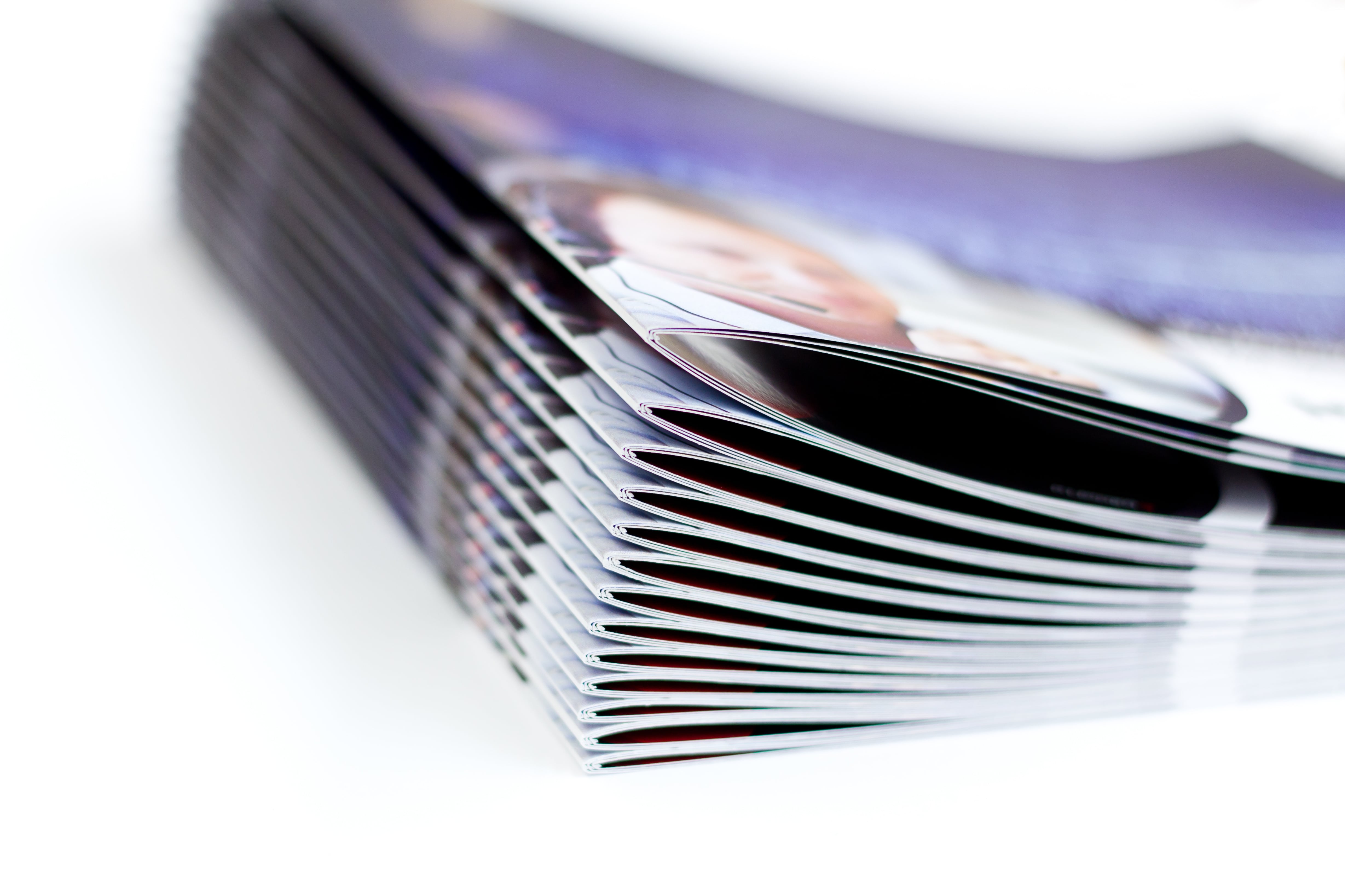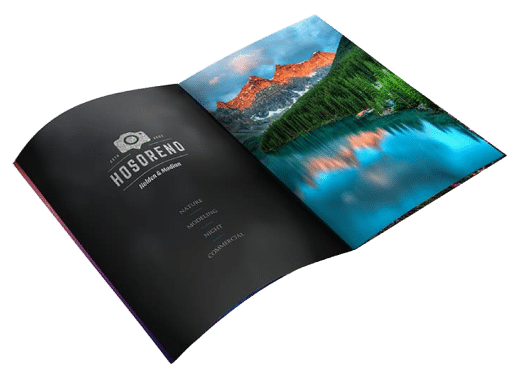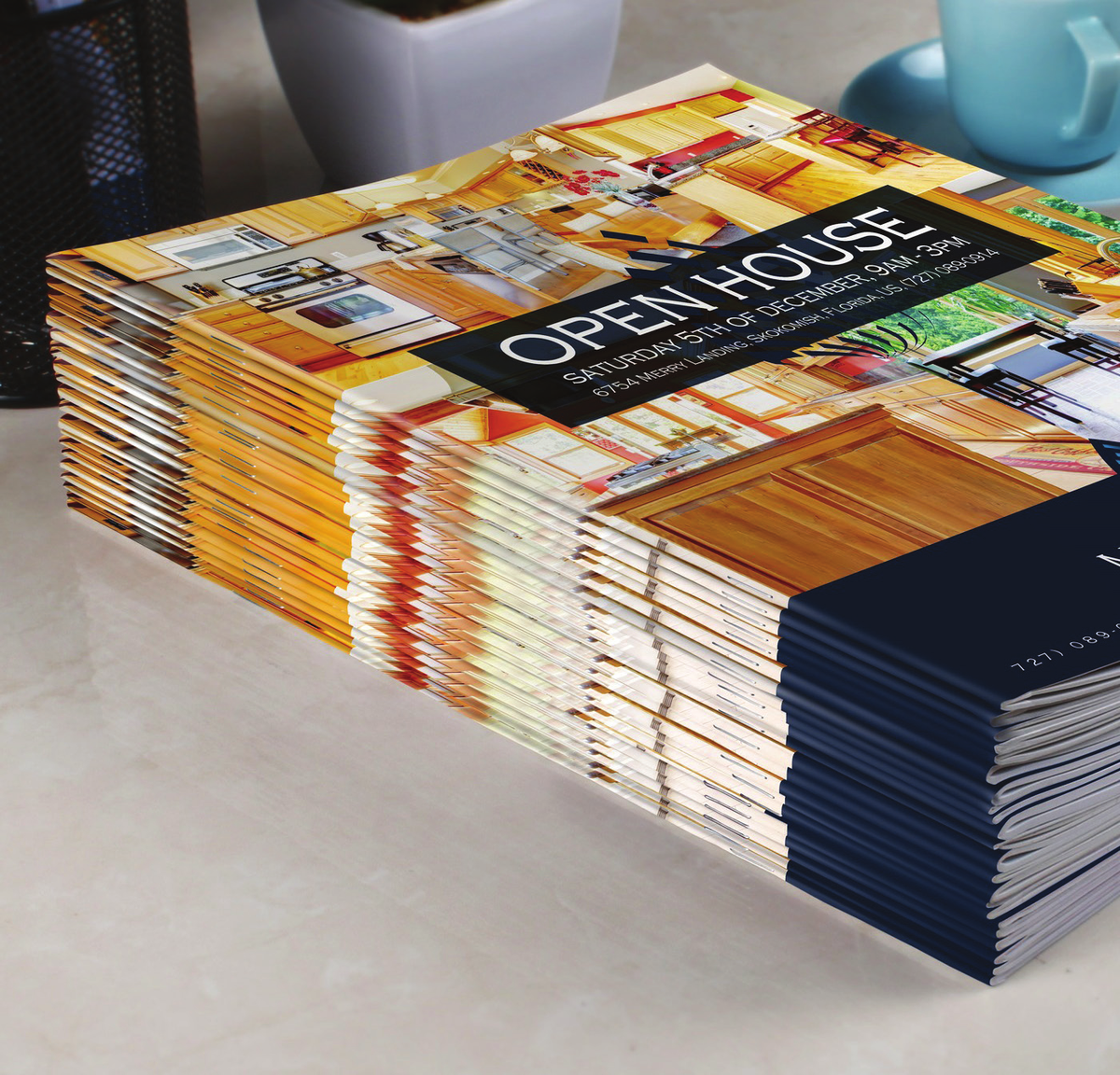Why Interactive Features Are Now Essential in Booklet Printing
Why Interactive Features Are Now Essential in Booklet Printing
Blog Article
The Essential Overview to Understanding Booklet Printing Options and Techniques
The procedure of booklet printing includes multiple factors to consider that can significantly impact the last product. From choosing the ideal style and dimension to comprehending the nuances of binding approaches, each option plays a crucial duty. Furthermore, factors such as paper stock and printing methods further affect the effectiveness of the brochure. As one navigates these choices, it becomes crucial to understand how they interconnect and what that suggests for the general result.
Comprehending Pamphlet Styles and Sizes
When taking into consideration pamphlet printing, comprehending the different layouts and dimensions readily available is essential for accomplishing the wanted presentation. Booklets can be created in various styles, consisting of saddle-stitched, spiral-bound, and perfect-bound, each offering unique benefits. Usual dimensions range from typical letter (8.5 x 11 inches) to smaller alternatives like A5 (5.8 x 8.3 inches), enabling flexibility based upon material and target audience.Selecting the proper dimension can affect both the design and reader engagement. Larger sizes might fit visually driven material, while smaller sized styles may be extra user-friendly and mobile. Furthermore, the number of web pages impacts the choice of binding technique, as thicker pamphlets may require sturdier bindings. Ultimately, understanding these facets permits a much more tailored approach, guaranteeing that the last item straightens with the intended message and aesthetic, boosting the total efficiency of the interaction.
Picking the Right Paper Stock

Binding Methods: Options and Factors To Consider
When it concerns binding techniques for pamphlets, numerous choices are available, each with distinct benefits. Saddle stitch binding uses a cost-effective remedy for thinner brochures, while ideal binding techniques supply a more refined search for thicker publications. Wire-O binding attracts attention for its toughness and simplicity of usage, making it optimal for papers that call for versatility.
Saddle Stitch Binding
Saddle stitch binding uses a sensible and cost-effective remedy for assembling booklets, making it a preferred option among authors and businesses. This binding technique includes folding sheets of paper in half and stapling them along the fold line, developing a neat and well organized look. Generally appropriate for booklets with a lower page count, saddle stitching is ideal for magazines, sales brochures, and instructional materials. The simplicity of this technique permits for fast manufacturing and is often preferred for brief runs or advertising items. It is important to keep in mind that saddle stitch binding might not be suitable for thicker pamphlets, as the spinal column might not hold up under raised weight. Overall, it remains a reputable choice for lots of printing tasks.
Perfect Binding Techniques
Perfect binding is a commonly utilized method that offers a refined and specialist surface to publications and booklets. This approach includes gluing the pages with each other at the back utilizing a strong adhesive, permitting a tidy edge and the capacity to hold a larger number of pages contrasted to saddle stitching. Perfect binding is especially suitable for thicker brochures, such as directories and yearly records, where a strong, flat spinal column is wanted. Additionally, it provides the choice for a printed cover that can be created to boost aesthetic appeal. Considerations such as page count, paper weight, and the planned use of the booklet must be taken into account, as they can impact durability and overall high quality.
Wire-O Binding Alternatives
Wire-O binding, understood for its durability and adaptability, uses an excellent alternative for brochures that require simple page transforming and an expert look. This binding technique uses a series of steel loops that hold pages firmly, enabling them to lie flat when open. It is particularly ideal for directories, presentations, and guidebooks because of its robust nature. Wire-O binding is readily available in various shades and sizes, fitting different web page counts and thicknesses. Additionally, it permits the inclusion of tabs and covers, boosting the brochure's overall aesthetic. Considerations for Wire-O binding consist of the choice of cable shade, the size of the loopholes, and the extent of personalization wanted, all of which can greatly influence the end product's look and performance.
Digital vs. Offset Printing: Which Is Best for You?
When selecting a printing technique for brochures, comprehending the distinctions in between digital and balance out printing is vital. Digital printing utilizes modern-day technology to create top notch prints rapidly and affordably, making it excellent for brief runs or tasks needing quick turn-around times. It allows for modification, providing the capacity to publish on-demand with marginal waste.In contrast, offset printing is a traditional method that masters generating large amounts with consistent top quality. It includes transferring ink from a plate to a rubber blanket, then to the paper, which results in precise information and dynamic shades. Balance out printing typically requires longer configuration times and is extra affordable for bigger volumes.Ultimately, the choice between electronic and balance out printing depends on task requirements, budget plan, and wanted quantity. For small, time-sensitive projects, digital may be the most effective choice, while balanced out might be more suitable for larger, top quality productions.

Designing Your Booklet: Tips and Ideal Practices
When creating a brochure, mindful focus to design, typeface choice, and color usage can greatly enhance its effectiveness. A well-structured layout overviews the viewers's eye, while ideal font styles ensure readability and communicate the wanted tone. In addition, reliable use color can evoke feelings and emphasize essential information, making the general design much more impactful.
Choosing the Right Layout
Exactly how can one properly choose the best layout for a booklet? It is important to review the pamphlet's purpose and target audience. A clean, organized format improves readability and involvement. Utilizing a grid system can assist in lining up components regularly, creating a specialist appearance. Additionally, integrating visual power structure through varying home dimensions and positionings of images and message can guide the visitor's eye and highlight essential details. It is also crucial to leave enough white space, which stops congestion and permits much better focus. Finally, testing different formats via mock-ups can provide understanding right into just how the style performs in real-world situations, ensuring that the end product meets both aesthetic and useful requirements.
Picking Proper Fonts
A well-chosen typeface can considerably boost the overall design of a pamphlet, complementing the design and enhancing the material's message. The selection of typefaces should consider readability, especially for body text, as it assures the info comes to all readers. Sans-serif fonts are usually preferred for electronic layouts, while serif font styles can offer a standard feel in published materials. It's a good idea to limit font options to two or 3 to keep aesthetic coherence. Furthermore, font style dimension plays a crucial role; headings need to be unique yet not overwhelming, while body message must be comfortable for reading. When choosing font styles, alignment with the brochure's style and target audience is vital for reliable communication and aesthetic allure.
Reliable Use Color
Color serves as a powerful tool in pamphlet layout, shaping understandings and guiding visitor emotions. It can evoke feelings of count on, peace, or exhilaration, depending on the colors picked. Developers need to consider color concept principles, ensuring that the picked combination straightens with the brochure's message and target market. Using warm shades like red and orange can create urgency, while cooler tones like environment-friendly and blue foster tranquility.Additionally, contrast plays a vital role; corresponding colors can improve readability and visual allure. Consistency in color usage throughout web pages further enhances brand identification and communication. Inevitably, effective color application not only records attention however additionally enhances the brochure's objective, making it a crucial element of successful style.
Completing Touches: Coatings and Unique Impacts
While numerous consider the material and design of a pamphlet the most critical aspects, the completing touches, such as layers and unique impacts, play a necessary function in improving its overall charm. Coatings can supply defense and longevity, making sure that the booklet endures damage. Matte finishes use a sophisticated, non-reflective surface area, while glossy coverings can make shades appear more dynamic and attractive. Special results, like embossing or foil stamping, add a tactile dimension that can develop a remarkable impact. These strategies can highlight certain areas, drawing interest to vital info or creating aesthetic interest. Furthermore, UV coating can provide a high-shine coating that boosts the general look.Together, these completing touches not only improve the pamphlet's visual yet also communicate professionalism and trust and attention to detail, eventually leaving a lasting influence on the visitor.
Cost Considerations for Booklet Printing
Recognizing the different expense considerations for booklet printing is important for businesses and companies aiming to enhance their budget plans. Trick aspects affecting prices include the selection of paper, ink, and binding methods. Greater high quality materials, such as superior paper or specialized inks, normally raise the overall expense. In addition, the dimension and page count of the brochure play a significant role; larger brochures call for even more resources and time to produce.Another essential consideration is the printing technique, whether digital or offset, as each has its very own prices framework and viability for various quantities. Businesses need to also factor in style prices, which can differ based on intricacy and using professional Our site solutions. Ultimately, shipping and handling charges can contribute to the overall, particularly for big orders. By reviewing these components, companies can make enlightened decisions that align with their financial capabilities while accomplishing the preferred quality in their printed products.
Frequently Asked Concerns
What Are the Environmental Influences of Booklet Printing?
The ecological influences of booklet printing consist of deforestation from paper production, carbon emissions from transportation, and waste generation from discarded materials - Booklet Printing. Lasting practices, such as making use of recycled paper and eco-friendly inks, can alleviate these results
Just How Can I Ensure Shade Precision in My Brochure?
To assure shade precision in a booklet, one must utilize adjusted monitors, utilize specialist color profiles, carry out test prints, and select premium printing services that provide color matching and proofing alternatives for finest outcomes.
What Is the Normal Turnaround Time for Booklet Printing?
The regular turn-around time for booklet printing differs depending upon the complexity and quantity - Booklet Printing. Usually, it varies from a few days to 2 weeks, influenced by aspects such as printing approaches and completing needs
Are There Minimum Order Quantities for Brochure Printing?

Can I Publish Booklets in Several Languages?
Publishing pamphlets in numerous languages is feasible. Many printing solutions provide choices a fantastic read for multilingual or bilingual designs, enabling reliable interaction. Mindful preparation guarantees that develop aspects fit different languages without jeopardizing readability or aesthetic appeals. Furthermore, factors such as paper stock and printing strategies more affect the performance of the pamphlet. When thinking about pamphlet printing, recognizing the different formats and dimensions available is important for achieving the preferred discussion. When picking a printing approach for brochures, understanding the distinctions in between electronic and counter printing is crucial. Furthermore, the size and page count of the pamphlet play a substantial role; bigger booklets need even more resources and time to produce.Another essential consideration is the printing method, whether electronic or balanced out, as each has its very own rates framework and suitability for different quantities. The ecological impacts of pamphlet printing include logging from paper production, carbon emissions from transportation, and waste generation from thrown out products.
Report this page